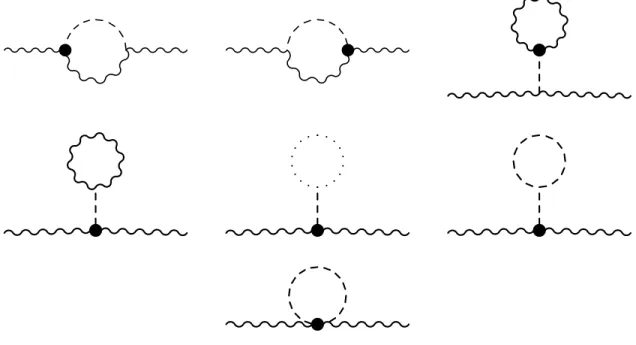Precision Electroweak Physics at One Loop
Volltext
Abbildung

![Table 1: Precision electroweak quantities. Data taken from [11, 12].](https://thumb-eu.123doks.com/thumbv2/1library_info/4021984.1541853/5.918.109.771.115.409/table-precision-electroweak-quantities-data-taken-from.webp)
ÄHNLICHE DOKUMENTE
Figure 1 illustrates how this observation was made simultaneously in various SM Higgs boson search channels by showing the best fit value for the global signal strength µ for a
• With higher statistics data sets available in LHC Run 2, Hàgg and HàZZ * à4l become excellent probes for measurement of Higgs boson properties.. Higgs boson
● Question: how can the symmetry be the source of electroweak interactions and at the same time elementary particle masses , which explicitly break this symmetry....
● Excitation of vacuum ground state leads to existence of a new particle, characterized by very peculiar coupling structure, needed to preserve the symmetry of the system:.
● Search for neutral MSSM Higgs bosons in the di-tau final state. ● Search for the decay H→hh, A→Zh in multilepton and photon
● Spin and CP studies need something to make spin of particles visible → spin analyzer.. ● Principle: angular momentum conservation in 2-body decay ( best high energetic or with
– process stable particles through detector simulation to obtain „hits“ in detector cells;. – run
● Go through all five decay channels and discuss what happened to them since 4 th July 2012. ● Make